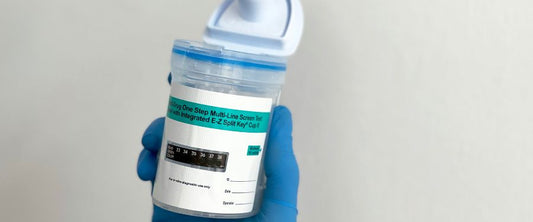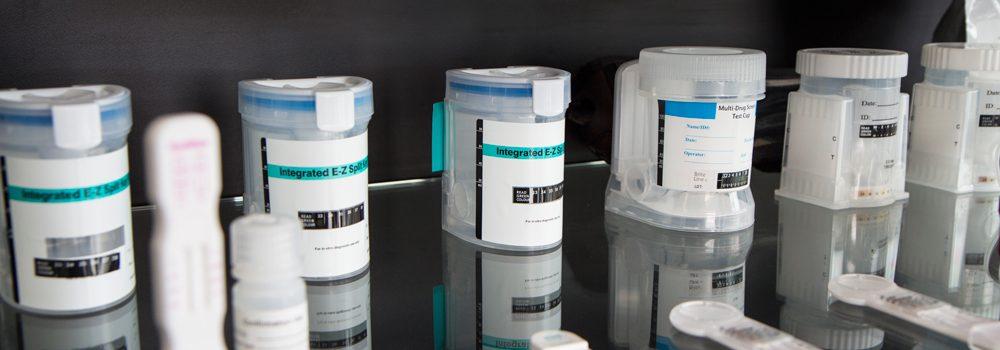Drug testing plays a crucial role in ensuring workplace safety, regulatory compliance, and fair testing practices. However, some individuals try to manipulate test results by using adulterants—substances designed to interfere with test accuracy.
Tampering with drug tests can lead to invalid results, undermine workplace policies, and create significant safety hazards, especially in high-risk industries like transport, construction, and law enforcement. To counter this, modern drug testing kits incorporate adulterant detection technology to identify and flag compromised samples.
This guide delves into adulterants, the common substances used for tampering, and the methods drug test kits employ to detect and prevent manipulation, ensuring accurate and trustworthy results.
LEARN MORE: How drug testing kits work?
What are adulterants in drug test kits?
Adulterants are substances or techniques used to manipulate a drug test sample, aiming to produce a false-negative or inconclusive result. They can be added directly to the sample or ingested beforehand to disrupt the detection of drugs.
Adulterants are especially concerning in urine drug test kits, as samples can be diluted, substituted, or chemically modified. To prevent this, modern drug test kits feature adulterant detection to flag tampered samples.
Common adulterants used in drug tests
Methods of drug test adulteration vary from everyday household substances to specialised commercial products intended to manipulate results. Below are some of the most commonly used adulterants and the techniques used to detect them:
- Oxidants (OX) – Chemicals such as bleach or hydrogen peroxide are used to break down drug metabolites in urine samples. Oxidant detection strips can identify these substances in tampered samples.
- Specific Gravity (S.G.) – This measures the density of urine. A reading outside the normal range can indicate dilution or substitution.
- pH – Normal urine has a balanced pH level. Extreme acidity or alkalinity suggests an attempt to alter test results using substances like vinegar or baking soda.
- Nitrite (NIT) – A common ingredient in commercial adulterants that interferes with drug metabolite detection.
- Glutaraldehyde (GLUT) – A chemical sometimes found in products marketed as "urine cleansers" that disrupt drug test immunoassays.
- Creatinine (CRE) – A naturally occurring compound in urine. Low levels indicate excessive water intake or intentional dilution.
- Temperature – While not an adulterant itself, temperature is a key indicator of sample validity. Fresh urine should be between 32-38°C (90-100°F). A sample outside this range suggests substitution with synthetic or pre-collected urine.
How drug test kits detect adulterants
Modern drug testing kits, such as the SureStep EZ Split Cup, use adulterant test strips to identify tampered samples and verify their integrity. These multi-parameter strips screen for various substances that may signal adulteration.
By incorporating adulterant detection, these kits improve testing accuracy, prevent manipulation, minimise false negatives, and ensure legally defensible results.
LEARN MORE: Transport companies must prioritise drug testing
Best practices to prevent adulteration in workplace drug testing
To ensure accurate and tamper-proof drug testing, workplaces should implement the following best practices:
- Use adulterant detection kits alongside standard drug test kits.
- Supervise sample collection to minimise opportunities for tampering.
- Follow strict chain of custody protocols to maintain sample integrity.
- Educate employees on the risks and consequences of drug test tampering.
- Work with accredited drug testing providers for laboratory confirmatory testing when required.
Ensuring tamper-proof drug testing
Adulterants in drug testing present a major obstacle to workplace safety and compliance. By recognising how adulteration occurs and utilising drug test kits with built-in adulterant detection, organisations can maintain accurate, tamper-resistant testing.
📌 Contact Andatech Malaysia to learn more about the best drug testing kits and alcohol breathalysers for your organisation today!
Disclaimer: The information provided in this article is for general reference only. Please seek advice from professionals according to your business’s needs.
Written by Andatech Malaysia









